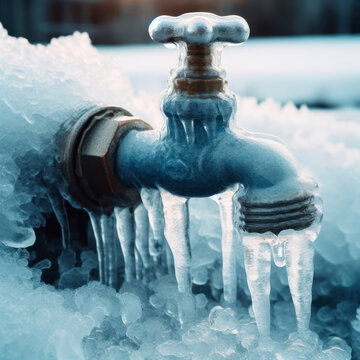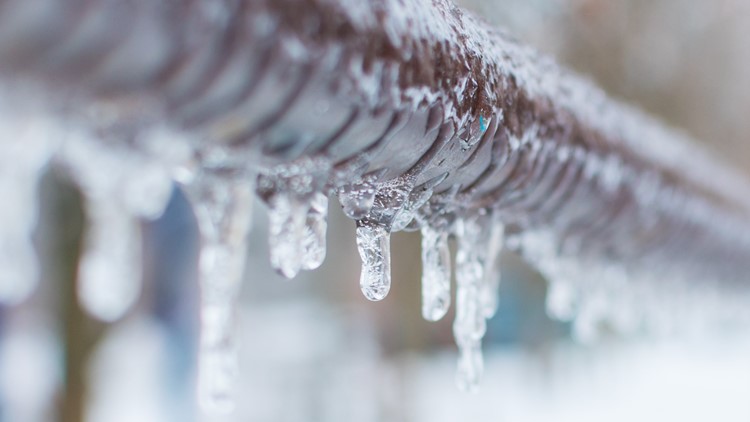Ways to Maintain Your Pipes from Freezing Damage: Crucial Guidance
Ways to Maintain Your Pipes from Freezing Damage: Crucial Guidance
Blog Article
The content directly below pertaining to 6 Ways to Prevent Frozen Pipes is truly interesting. Read it for your own benefit and figure out what you think about it.

Cold weather can ruin your pipes, especially by freezing pipelines. Below's exactly how to avoid it from happening and what to do if it does.
Intro
As temperatures decline, the risk of frozen pipelines increases, possibly bring about costly repair services and water damages. Understanding exactly how to prevent frozen pipelines is crucial for home owners in cool environments.
Prevention Tips
Shielding vulnerable pipelines
Cover pipelines in insulation sleeves or use warmth tape to safeguard them from freezing temperature levels. Concentrate on pipelines in unheated or exterior locations of the home.
Heating strategies
Maintain indoor areas properly heated up, especially locations with plumbing. Open cupboard doors to permit warm air to distribute around pipelines under sinks.
How to determine icy pipes
Search for reduced water flow from taps, uncommon smells or sounds from pipelines, and visible frost on subjected pipelines.
Long-Term Solutions
Architectural adjustments
Take into consideration rerouting pipelines away from exterior walls or unheated areas. Include additional insulation to attics, basements, and crawl spaces.
Upgrading insulation
Buy high-quality insulation for pipelines, attic rooms, and walls. Appropriate insulation helps preserve consistent temperature levels and minimizes the threat of frozen pipes.
Shielding Exterior Pipes
Yard hoses and outdoor taps
Separate and drain garden hose pipes before winter season. Install frost-proof spigots or cover outdoor faucets with shielded caps.
Recognizing Icy Pipes
What triggers pipes to ice up?
Pipes freeze when revealed to temperature levels below 32 ° F (0 ° C) for extended durations. As water inside the pipelines freezes, it broadens, taxing the pipe wall surfaces and possibly causing them to rupture.
Threats and damages
Icy pipelines can result in water interruptions, residential or commercial property damage, and pricey repair work. Ruptured pipes can flooding homes and cause considerable structural damage.
Indications of Frozen Pipeline
Recognizing frozen pipelines early can stop them from rupturing.
What to Do If Your Pipelines Freeze
Immediate actions to take
If you think icy pipelines, maintain faucets open up to ease pressure as the ice melts. Make use of a hairdryer or towels soaked in hot water to thaw pipelines gradually.
Verdict
Preventing icy pipelines requires proactive actions and quick responses. By recognizing the causes, signs, and safety nets, property owners can protect their pipes during winter.
5 Ways to Prevent Frozen Pipes
Drain Outdoor Faucets and Disconnect Hoses
First, close the shut-off valve that controls the flow of water in the pipe to your outdoor faucet. Then, head outside to disconnect and drain your hose and open the outdoor faucet to allow the water to completely drain out of the line. Turn off the faucet when done. Finally, head back to the shut-off valve and drain the remaining water inside the pipe into a bucket or container. Additionally, if you have a home irrigation system, you should consider hiring an expert to clear the system of water each year.
Insulate Pipes
One of the best and most cost-effective methods for preventing frozen water pipes is to wrap your pipes with insulation. This is especially important for areas in your home that aren’t exposed to heat, such as an attic. We suggest using foam sleeves, which can typically be found at your local hardware store.
Keep Heat Running at 65
Your pipes are located inside your walls, and the temperature there is much colder than the rest of the house. To prevent your pipes from freezing, The Insurance Information Institute suggests that you keep your home heated to at least 65 degrees, even when traveling. You may want to invest in smart devices that can keep an eye on the temperature in your home while you’re away.
Leave Water Dripping
Moving water — even a small trickle — can prevent ice from forming inside your pipes. When freezing temps are imminent, start a drip of water from all faucets that serve exposed pipes. Leaving a few faucets running will also help relieve pressure inside the pipes and help prevent a rupture if the water inside freezes.
Open Cupboard Doors
Warm your kitchen and bathroom pipes by opening cupboards and vanities. You should also leave your interior doors ajar to help warm air circulate evenly throughout your home.

As an enthusiastic person who reads about 6 Ways to Prevent Frozen Pipes, I think sharing that excerpt was essential. Make sure you take a moment to distribute this blog posting if you liked it. We recognize the value of your readership.
Get Estimate Report this page